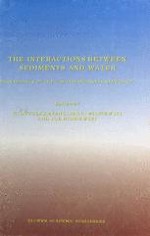1997 | OriginalPaper | Buchkapitel
Water-Sediment Exchange of Nutrients During Early Diagenesis and Resuspension of Anoxic Sediments from the Northern Adriatic Sea Shelf.
verfasst von : Federico Spagnoli, Maria Cristina Bergamini
Erschienen in: The Interactions Between Sediments and Water
Verlag: Springer Netherlands
Enthalten in: Professional Book Archive
Aktivieren Sie unsere intelligente Suche, um passende Fachinhalte oder Patente zu finden.
Wählen Sie Textabschnitte aus um mit Künstlicher Intelligenz passenden Patente zu finden. powered by
Markieren Sie Textabschnitte, um KI-gestützt weitere passende Inhalte zu finden. powered by
This paper presents the results of a study on nutrient exchange at the sediment-water interface which is caused by early diagenesis and resuspension of bottom sediments. The research was carried out on anoxic silty-clay sediment cores collected south of the Po river delta (Northern Adriatic Sea, Italy) in late summer.The early diagenetic processes were investigated by means of the integrated study of pore-water chemistry and solid phase composition. Exchange at the sediment-water interface was studied by comparing the fluxes measured in incubated cores with the fluxes calculated by modelling pore-water profiles. Nutrient exchange during resuspension was analysed by simulating a storm event in the laboratory.The high production of nutrients near the sediment-water interface is mainly caused by the anoxic degradation of organic matter and the successive reductions of Mn and Fe-oxyhydroxides and, to a lesser extent, of sulphate. The oxic degradation of organic matter occurs only at the sediment-water interface.In the incubation experiment the increases of phosphate, ammonia, nitrate, silica, and Fe in bottom waters were measured. The comparison between calculated and measured fluxes showed that: a) the fluxes are mainly controlled by molecular diffusion; b) phosphate and Fe sink because of the Fe-oxyhydroxide precipitation and c) nitrification process influences the ammonia and nitrate fluxes.Resuspension caused the release of: a) phosphate through surficial desorption and authigenic apatite dissolution; b) ammonia by means of the oxic degradation of organic matter; and c) dissolved silica generated by biogenic silica dissolution. Resuspension also caused a weak removal of Fe. The more oxic conditions following resuspension favoured the formation of a Fe-oxyhydroxide film at the sediment-water interface which inhibited the phosphate fluxes from sediments to the water column.
